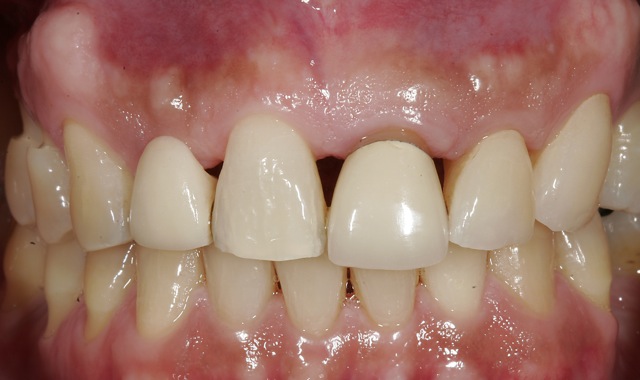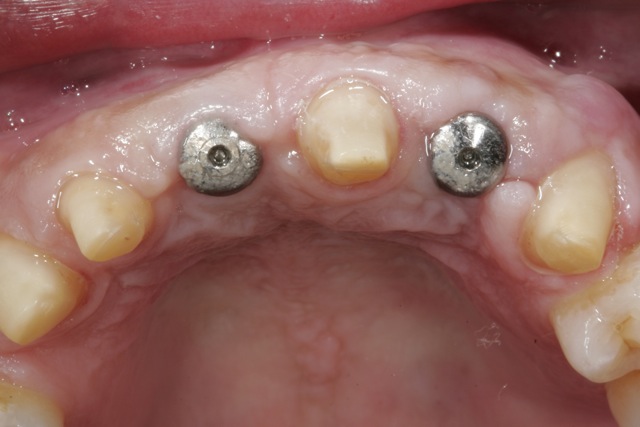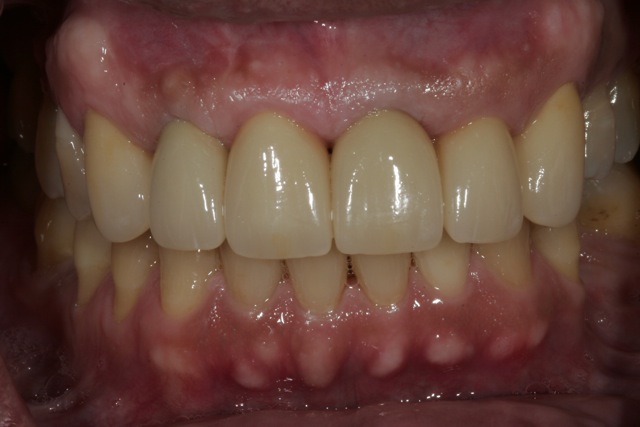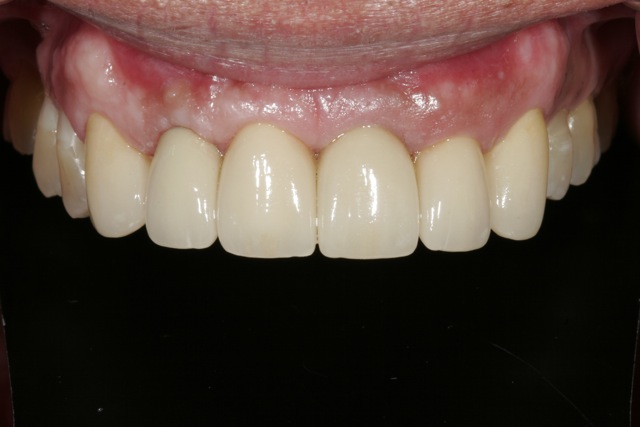Bone Augmentation is Our Specialty:
We use a variety of bone grafting techniques and materials to predictably regenerate bone that can strongly support dental implants. Our office is equipped with specialized instruments, technology, and materials specifically designed for bone grafting and augmentation.
- Bone grafting procedures: We offer patient-specific procedures to increase necessary bone width or height. These include onlay bone grafting, sinus lift bone augmentation, ridge-split techniques, distraction osteogenesis, and guided bone regeneration procedures.
- Biological growth factors: We use technologically advanced biological products designed to promote bone healing and augmentation process. Using growth factors we can generate more bone, increase speed of bone maturity and healing, and achieve better quality of bone for implant support. We offer in-office platelet-rich-growth-factor (PRGF), platelet-rich-plasma (PRP), and recombinant human bone morphogenic protein (rh-BMP2) products.
- Specialized tools and materials: As appropriate, we use variety of bone substitute materials, guided bone regeneration membranes, Piezotome ultrasonic bone surgery instrument, specialized tools for harvesting bone, and unique tools to make bone grafting less invasive and more effective.
How Does the Jaw Bone Shrink?
When teeth are lost or extracted, the bone that previously supported those teeth no longer serves a purpose and begins to deteriorate or resorb. Dentures accelerate the bone resorption process as they put pressure on and compact the gums and underlying bone. As facial structures continue to collapse, the dentures must be relined (made thicker) to compensate for additional bone loss.
In a recent nationwide survey sponsored by the Institute for Dental Implant Awareness, only 36% of respondents were aware that bone loss resulted from missing teeth. And, 75% of respondents with bridges, partials, or dentures would have changed their minds about these treatment options if they had known about the bone loss/deterioration that would occur.
Bone loss may also result from gum disease, infection, traumatic injuries, or cysts. The result is deformities of the jaw bone and gum tissues, leaving inadequate support for tooth replacement and cosmetic problems.
There is a Solution:
Bone loss does not mean you have to remain a dental anomally. Nor do you have to cope with dentures and over sized bridges that compromise your aesthetics and function. Today, there are great solutions. Missing bone can be augmented by grafting procedures, recreating normal shape and dimensions, and making replacement with dental implants possible. You may be wondering if bone grafting is safe, how it is performed, and where the grafting material comes from. Other common concerns include its success rate, recovery, and what complications may result.
Patients with tooth and bone loss often suffer greatly from both functional and cosmetic problems. Conventional tooth replacement options, such as bridges or dentures, are inadequate for chewing, talking, and certainly for an acceptable smile. Bone grafting replaces and augments missing bone and supports teeth in a natural way. It promotes the long-term success of dental implants, cosmetic results, hygiene, and the longevity of your teeth.
Bone Grafting:
- Provides proper support for implants
- Increases the longevity of teeth and implants
- Creates a natural gum tissue form and level
- Improves aesthetics and visual balance
- Improves hygiene and teeth cleaning
How Successful is Bone Grafting?
Bone grafting is safe and predictable, and complications can be avoided when it is performed by a trained, skillful, and experienced oral surgeon using specialized instruments and techniques, proper tissue handling, recipient site preparation, and patients that adhere to important post-operative instructions. Dr. Kazemi specializes in bone grafting and tissue regeneration procedures and has performed them successfully on thousands of patients. Our office is designed and equipped for bone grafting and dental implant procedures, and the team assisting Dr. Kazemi is specially trained. Methodical, exacting, and detailed protocols are followed strictly to make sure every patient is safe and has a pleasant experience. The fact is, regenerating lost bone is highly achievable with extensive clinical and scientific experiences to support it.
Who is Qualified to Do Bone Grafting?
Bone grafting and teeth replacement with dental implants require the collaborative efforts of a surgeon and a restorative dentist and dental laboratory. Bone grafting and implant placement are highly skilled disciplines, best performed by oral surgeons who are well trained and perform this procedure daily. Dr. Kazemi specializes in bone grafting and has performed it successfully on thousands of patients. The prosthetic aspect (crown, bridge, etc) is performed by your restorative dentist who may be a general dentist or a prosthodontist, a specialist trained in more complex aesthetic and reconstructive restorative dentistry.
A success story:
This patient did not like his smile with its poor crowns, black holes, poor visual balance, and he irregular form of his teeth. He had some bone loss on his missing lateral incisor and another tooth that required extraction. He had also already suffered some bone loss. Two types of bone graft was done on him. First a site preservation graft was done in the site of an extracted incisor. Second, a graft was done to increase the width of bone in the lateral incisor region. Later, dental implants were placed along with a gum tissue graft. Following three months of temporization, his final crowns were delivered. The keys in achieving this type of result are bone and gum tissue grafting, precise implant positioning by the surgeon, and creative prosthetic work by the restorative dentist.



